The Mythological and Folk Tale Origins of Classic Anime
Some of the most well-known and successful anime are often inspired by eastern folklore and mythology. Anime creators mine Japanese culture for source material, re-imagining the myths and legends for entertainment. However, many of the mythological underpinnings of these series go unnoticed by the larger audience. Many anime writers cleverly weave the folklore and mythology into their stories, retelling some of these classics while embedding some characters, symbols and themes within their narratives.
Folklore and Yokai in Inuyasha
Inuyasha: A Feudal Fairy Tale is an anime and manga series, written and illustrated by Takahashi Rumiko. The manga series published from 1996 to 2008 in Weekly Shonen Sunday, with the animated series running from 2000 to 2010. Inuyasha is set in the Sengoku period (1467-1573), focusing on the title character Inuyasha, a half dog demon, and Higurashi Kagome the reincarnation of shrine maiden, Kikyo. Together they search for the fragments of the shattered Shikon Jewel, attempting to destroying it for good.
Takahashi draws inspiration from Japanese folklore and yokai (a class of supernatural monster, spirit or demon in Japanese mythology). She uses the dog yokai, Inugami, as inspiration for Inuyasha and his brother Sesshomaru. In Japanese mythology, Inugami were dog like beings, similar to werewolves, that resembled normal dogs to blend in with society. Their true form was that of a decapitated dog head. You could create an Inugami by cutting the head off of a starving dog or a dog whose body was buried up to the neck. It was believed that performing this act would grant wishes. While Inuyasha couldn’t transform into a dog due to being only half-demon, both his father and brother could.
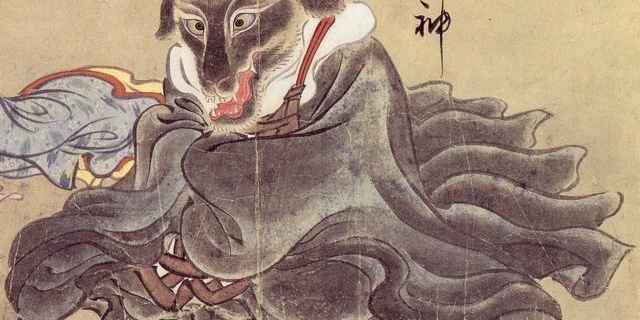
Several supporting characters are inspired by yokai as well. Sango, a demon slayer, has a pet cat, Kirara that is a nekomata (cat yokai). They were said to have two tails, the ability to transform into humans and were formerly domesticated pet cats. Kirara is depicted as having two tails and transforms from a kitten into a large cat. Shippo, a shape-shifting yokai, is inspired by the kitsune. In Japanese mythology the kitsune (demon-fox) was depicted as a magical and intelligent creature. Kitsune were also known to be tricksters. In Inuyasha, Shippo isn’t particularly strong but he does use illusions and toy based tricks. Shippo appears as a little boy with fox legs, ears, feet and a tail.
Japanese Mythology and Naruto
Kishimoto Masashi also uses the kitsune myth, along with several other references to Japanese myths in the series, Naruto. The title character in the series, Uzumaki Naruto, is a jinchuriki, a human that has had a tailed beast sealed inside them. Naruto had the nine tailed kitsune named Kurama sealed inside him as a baby. In mythology the number of tails a kitsune has correlates with its age, wisdom and power. Masashi uses this aspect of the myth to visually symbolize how powerful each tailed beast is. The nine tailed beast inside Naruto is considered to be the most powerful of all the tailed beasts.
Furthermore, several of the other eight tailed beasts are inspired by creatures found in myths. The one-tailed beast, Shukaku is inspired by the Tanuki. In mythology the tanuki is a shape-shifting yokai. They appear in the shape of a raccoons and are magical. Shukaku greatly resembles the tanuki. The two-tailed beast, Matatabi, is inspired by both the bakeneko, a type of cat yokai and the nekomata. Matatabi has two tails like the nekomata, as cats are considered to be yokai because of the psychical attributes’. The fact that cat eyes change shape based on the time of day, they walk silently, lick blood, and are hard to control give off the impression that they’re demonic.
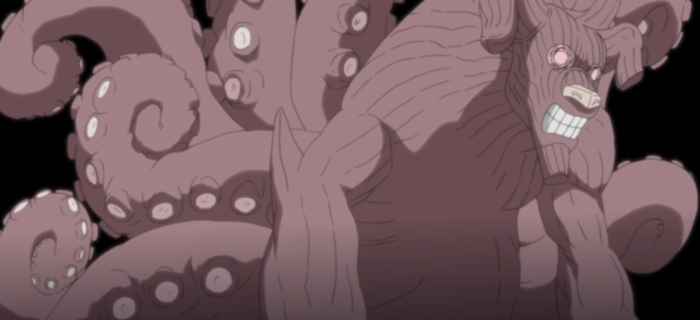
The four-tailed beast is named Son Goku, after the monkey king from Chinese mythology. Sun Wukong the Monkey King, was said to have been born from a magic stone. This stone develops a magic womb, which produces a stone egg. When the wind blows on the stone egg, it transform into a stone monkey. He rebels against heaven and is imprisoned inside a mountain by Buddha. Sun Wukong has incredible physical abilities, he possessed great strength, speed and the ability to jump halfway around the world. He is a skilled fighter, capable of defeating the greatest warriors of heaven. Each of his hairs was capable of becoming clones of the Monkey King, transforming into various animals, weapons or other objects.
The eight-tailed beast, Gyuki, is a combination of a ox and a octopus. It’s named after the monster of Japanese folklore, it’s also called Ushi-Oni. The Gyuki varied in appearance, but always featured a horned head. Ushi-Oni are known as being giant sea monsters, that live off the coast of Western Japan and eat fishermen. Kishimoto Masashi utilizes mythology to create the dojutsu (eye technique) of the Uchiha clan. In Naruto, dojutsu are ninja abilities that utilize the eyes. Itachi posses three powerful eye techniques named after three important Shinto deities, Tsukuyomi, Amaterasu and Susanoo.
In Shinto mythology Tsukuyomi is the male moon-god, he is the second of the “three noble children” of Izanagi. Both Tsukuyomi and Amaterasu were born when Izanagi washed out his eyes, in Naruto, the Tsukuyomi is one of the most powerful eye techniques. It traps the target in an illusion, causing the victim mental torture resulting in psychological trauma. In mythology, Amaterasu is the sister and wife of Tsukuyomi, she’s the goddess of the sun. Amaterasu, along with both her brothers, are said to have created ancient Japan. In Naruto, Amaterasu is the highest level jutsu of the fire element. When used it produces black flames that can burn for seven days and nights and it cannot be extinguished with water.
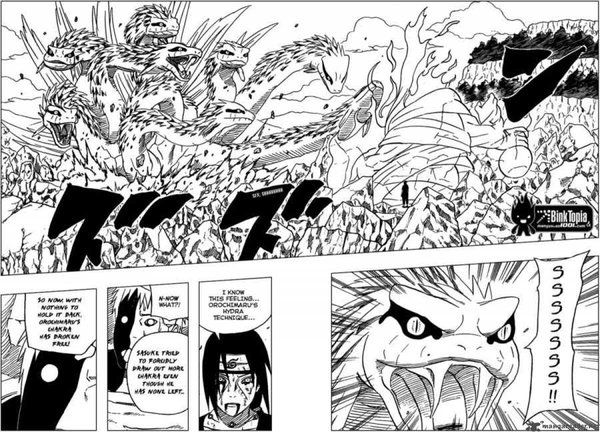
With Susanoo, Masashi deviates from the myth. While Susanoo bares the same name as the god in mythology and a relation to Amaterasu and Tsukuyomi (in order to acquire Susanoo ability the user must first master both eye jutsus), it resembles a massive samurai that covers its user. The Susanoo from Japanese mythology is the sea and storm god, born from Izanagi’s nose. He inherited the sword, Totsuka no Tsurugi, previously used by his father to kill his other son, Kagu-Tsuchi. In mythology, Susanoo uses Tsurugi to slay the serpent Yamata no Orochi, obtaining the sword of Kusanagi. Masashi uses this aspect of the myth and recreates it.
During the battle between Itachi and Sasuke, the ability Susanoo makes its debut. Orochimaru aids Sasuke with his strongest snake-related technique, “eight branches technique.” Orochimaru transforms into a giant serpent with eight heads like Yamata. He even wields the sword of Kusanagi. However, Itachi uses the sword of totsuka to seal Orochimaru away. Susanoo varies in appearance based on which Uchiha uses it, however, they all have some resemblance to the yokai, tengu. In mythology the tengu share physical features of birds of prey and humans. Tengu were often depicted with abnormally long noses, becoming the tengu’s most defining characteristic. According to Buddhism, tengu are harbingers of war, however, some viewed them as protectors of the forests and mountains.
Shinigami and Anime
One of the most frequent myths that appear in anime is that of the shinigami. Popular series like Yu yu hakusho, Death Note, Bleach and Soul Eater all focus on them. Shinigami were the death gods in Japanese mythology. They are described as being demons, fallen angels or even death itself. In Buddhism, a shinigami is a demon that possessed humans, causing humans to want to commit suicide. Shinigami also were considered responsible for determining when people died.
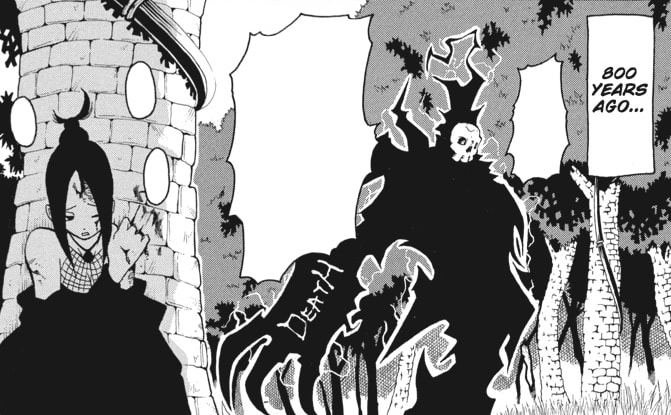
Yu yu hakusho created by Yoshihiro Togashi, was inspired by Buddhist mythology. In the series the main protagonist, Yusuke Urameshi is killed saving a child from being hit by a car. The ghost Botan greets him and escorts him into the Underworld. He is to be judged by the son of the King of Hell, Enma. Buddhist mythology states that the King of Hell is a dharmapala (wrathful god) who passes judgement on the dead. Yusuke successful passes the test to decide if he should be resurrected and is given the title of “underworld detective.”
Both series, Bleach and Soul Eater, feature characters that are responsible for human souls after death. In Bleach, the shinigami are called “Soul Reapers,” they are tasked with defending humans from evil spirits called hollows, while guiding the dead to the afterlife. Tite Kubo takes the concept of shinigami and expands on them by imagining them in a society, with laws to govern their behavior and a social hierarchy that features a King.
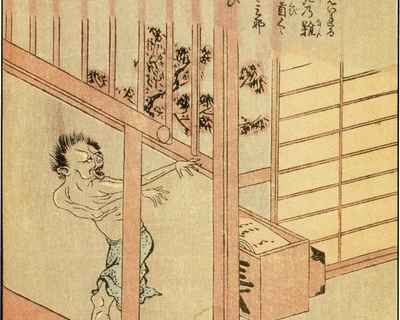
Atsushi Okubo does something similar, with his series Soul Eater. This series centers around the “Death Weapon Meister Academy,” which is headed by a shinigami named Death. Students are tasked with finding 99 evil human souls and one witch soul to create a “death scythe,” that can be used by a shinigami to defeat the evil Asura.
Probably the most prominent series about shinigami is Death Note. A psychological thriller series created by Tsugumi Ohba. Light Yagami is a high school student that discovers the notebook of a shinigami known as a “death note.” He discovers that the book can kill anyone if their name is written on its pages. With the help of shinigami Ryuk, Light attempts to “play God,” as he plans to rid the world of evil using the books supernatural powers. Ohba inverts the myth of shinigami’s by giving the power of death not to a god but a human.
Anime creators have used the ancient folklore and mythology as sources of inspiration for their more modern creations. Whether they re-imagined the stories, or used aspects of these myths in conjunction with their original creations. However, the retelling of Japanese mythology can lead to the obscuring of the original meaning or story. This can leave Western audiences with the misplaced belief that these series are completely original. While creators, writers and artists use folklore and myth as a bedrock for their creations, building different narratives, the audience can miss important parts of that story. Overall, anime creators have used and will likely continue to use Japanese culture to create entertaining series, but it will be up to the more curious among Western audiences to search for the deeper mythology beneath.
Work Cited
Plumb, Amy. “Japanese Religion, Mythology, and the Supernatural in Anime and Manga.” The International Journal of the Humanities: Annual Review, vol. 8, no. 5, 2010, pp. 237–246., doi:10.18848/1447-9508/cgp/v08i05/42930.
Shamoon, Deborah. “The Yokai in the Database: Supernatural Creatures and Folklore in Manga and Anime.” Marvels & Tales, vol. 27, no. 2, 2013, p. 276., doi:10.13110/marvelstales.27.2.0276.
Ortabasi, Melek. “(Re)Animating Folklore: Raccoon Dogs, Foxes, and Other Supernatural Japanese Citizens in Takahata Isao’s Heisei Tanuki Gassen Pompoko.” Marvels & Tales, vol. 27, no. 2, 2013, p. 254., doi:10.13110/marvelstales.27.2.0254.
Geller, Prof. “Shinigami – Japanese God of Death.” Mythology.net, Mythology.net, 2 Nov. 2016, mythology.net/japanese/japanese-gods/shinigami/.
Tengu: The Legendary Mountain Goblins of Japan, www.seinenkai.com/articles/tengu.html.
“Tengu.” Yokai Wiki, yokai.wikia.com/wiki/Tengu.
“Yokai Wiki.” Yokai Wiki | FANDOM Powered by Wikia, yokai.wikia.com/wiki/
What do you think? Leave a comment.
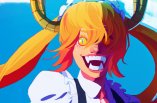
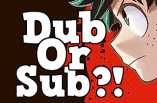
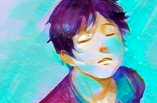
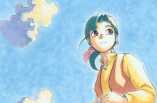
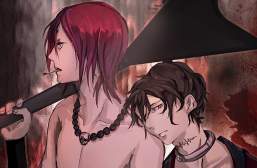
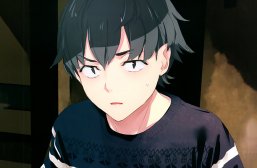
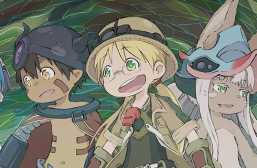
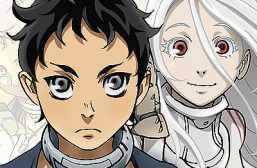
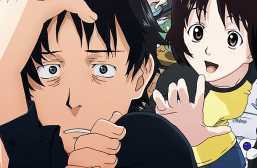
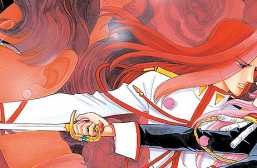
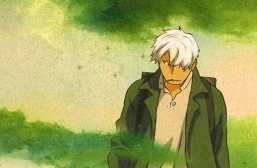
I like how Naruto kept it very Japanese. A lot of mangas pull inspiration from a large number of different cultures that can kind of make it seem like a grab-bag of mythology that was just stolen in order to use names and powers, where as Naruto links it all together fairly well and has thematic consistency in that sense.
I think the way Naruto seamlessly included Japanese mythology into the series made it feel like a more cohesive use of myths.
This was a really insightful read. Thanks for sharing! I was aware of some of these, already, but you’ve really done an excellent job of clearly explaining the ideas and origins behind the anime and how the link to Japanese folklore/myth! It really makes me want to study these more in depth!
Thank you. Obviously, there’s more anime and manga that use mythology within the narrative. Once you start looking into inspiration you’ll be surprised what myths they used.
I am really inspired to watch more anime with themes of folklore / mythology. Any recommendations? Could go with serious anime like Mononoke or goofy one like Kamisama Hajimemashita
Spirited Away, The Boy and the Beast, The Tale of the Princess Kaguya and Youkai Watch could be a good start.
Vampire Princess Miyu – both the OVA series and the later TV anime – is very much based on Japanese “noh” plays, a traditional form of drama in Japan.
Chouyaku Hyakuninisshu: Uta Koi – is not quite based on folklore but is instead based on poetry, with each episode featuring a fictionalized account of Heian era figures based on their poetry. I’d definitely recommend it, especially if you like romance anime.
Hoozuki no Reitetsu – is a comedy series steeped in Japanese and East Asian in general mythology and folklore. It’s basically a workplace comedy set in Buddhist hell. I found it to be quite funny, especially from the second episode onwards (the first episode is rather mediocre). However, it wasn’t that popular in the west because you kind of have to know a fair bit about East Asian mythology to get the various references. It was a hit in Japan and will be getting a second season.
The Tale of Princess Kaguya – is a Ghibli film that is quite literally based on a Japanese fairytale.
If we’re focusing on Ghibli movies, there’s Princess Mononoke and Spirited Away, but there’s also Pom Poko, which refers to quite a lot of facts about Tanuki and other animals from folklore.
And half the plot is about how modern society is forgetting their traditions. I like it, but to be honest, I’m not sure whether to recommend it. The combination of the Japanese folklore, the loose narrative, and the weird mix of comedy and tragedy might be a bit too alien for many people.
Mushishi
In a much looser sense, Uchouten Kazoku fits.
Aoi Bungaku might have something for you. It’s pretty dark though.
Banging article! I am grateful Inuyasha was among the first anime I watched. It is one of the main reasons why the medium grabbed my interest. It also helped spark my enjoyment of folklore.
Thank you. Inuyasha has been one of the major anime tent-poles for many of anime fans. It’s inspiration from folklore and myths were evident even without doing research. I was surprised how much of the series was inspired by mythology.
I hear you. Inuyasha was a part of my teenage years. I remember talking about it with friends my freshman year of high school, along with Ghost in the Shell, Full Metal Alchemist and Cowboy Bebop, among others.
The story isn’t THAT good to drag on for 160+ episodes. It’s very formulaic and the characters that interested me the most aren’t particularly well represented. In many ways, Inuyasha was outstanding for its time but it isn’t timeless in that sense. It was/is a series very much based in its zeitgeist. I think if someone took the time to edit out all the crap you didn’t need, it would be wonderful to watch again. You could easily take the 160 episodes and do 2/3 seasons (50-70) episodes to cover the whole series. It moves very slowly, follows an immutable formula, and resolves in a fairly obvious way.
If you were an adolescent in the early 2000s, I’d say watch it.
it was actually my first anime when i was a kid, i think i was about 10 or 11. i was obsessed with it lol. id play with friends i got to watch it and pretend i was miroku and wrap beads from a parade around my hand lmao. good times. i didnt really get into anime until about 7 months ago though.
best part was the band of seven arc for sure. if memory serves its the last arc before kanketsu hen which is basically part 2 of the anime but only 26 episodes. the animation quality steps up in that as well since it was made a few years later. i guess the anime caught up with the manga and they had to take a few years off to let it finish
Since Inuyasha was mentioned here already, try watching Rumiko Takahashi’s other work, Kyoukai no Rin-ne.
I’ve never watched the whole thing. I read the manga first and then saw how little each episode covered, and decided that it wasn’t worth it. The manga is quite lengthy already and took a while for me to read, but it would take much, much longer to watch.
I love this article! So insightful.
Thank you, I appreciate the compliment.
It was neat to learn the context behind some of the Japanese words that remained prevalent in the English dubbed anime while other jutsu got simplified.
Many fans that aren’t from Japan or familiar with mythology are surprised to learn it’s influence on anime, I was.
It may seem silly to say an animation or movie can change how you view the world, but that is the power of stories.
Animation is often under valued for it’s ability to use powerful narratives to effect the viewers.
Japanese folklore/mythology really make for an amazing story and I’ve found that some of my favourites often contain some kind of Youkai or other kinds of demons.
Some of the most popular anime features Youkai. Demon myths seem to be the most popular, especially the nine tails fox.
Interesting study Jiraiyan. I wish I could get into the older style animations.
Thank you. Some of the older anime don’t age well.
I’m just getting into Naruto and I’m already caught up in the world and I’m searching for stuff about it and this is just great! Saving this to my favorites.
I’m happy you enjoyed the article, Naruto is one of the best anime ever made in my opinion, you will love it.
There is more Japanese folklore than mythology in Naruto (which is only Amaterasu, Ebisu, Inari, Kusanagi and Tsukiyomi).
Naruto has a great deal more mythology than I explored, I only highlighted a few.
Inuyasha is definitely one of my favorites that left a gap when I finished it.
Cartoon network kept repeating the first few season over and over, it too so long to finish. I did enjoy the movies though.
Man I love those older anime shows, personally I love the old animations. Recently I started watching Sakigake!! Otokojuku and that came out 1988 and i’m loving it.
I’ve never heard of Sakigake!! Otokojuku I’ll check it out.
My favorite mythological anime set in feudal Japan:
Ninja Scroll
Basilisk*
Katanagatari
Shounen Onmyouji*
Blade of the Immortal
Mushishi*
Otogi Zoshi
Sword of the Stranger
Also cool (although not mythical) Afro Samurai
*more mythical themes.
Ninja Scrolls and Sword of the Stranger are two of my favorite anime movies.
Inuyasha is better put together than longer anime shows like Bleach. The feel remained consistent, as did the characterisation. The basic plot avoided becoming a Swiss cheese of story holes.
Bleach started slow and ended rapidly. The story suffered because of that.
Wonderful Article. I was once a huge fan of Inuyasha. It was my first exposure to Japanese mythology. Also, when you mentioned that, in Buddhism, shinigami possessed humans and drove them to suicide the anime that immediately came to mind was Mahou Shoujo Madoka. Even though the monster in question is a witch,it seems that the mythology of the MSM universe are still influenced by Buddhist mythology, which is only to be expected when you examine the themes of the show.
Thank you. I think some anime creators take some aspects of mythology and combine it with original ideas or other myths to create different characters and stories.
The Japanese mythology is really intriguing and rich with his numerous Gods, spirits and demons and i found great that Kishimoto is using this mythology for Naruto.
Wonderful. Thank you for writing this. It was very interesting to read.
I am very interested in Japanese culture, but I know next to nothing about it.
Ironic.
There is nothing ironic about it. You’re just a shithead that tries to act smart and downplay other people.
An interesting read and a great insight to the mythology – a fascinating read that could be applied even wider to various other genres also. Great work.
Naruto is my favorite series and I’m glad I got to learn some new things about it.
You must have done a lot of research. Good going! I love the Japanese mythology.
Thank you, it was research heavy but I learned a lot.
Awesome piece. If you all enjoy asian folklore and supernatural settings, I’d urge you to at least give one of these animes a go.
Love Inuyasha. It has several demons and folk lore that can be found in both Shintoism and Buddhism.
I was surprised to see a lot of Hindu mythology in Naruto as well.
I’m interested in this sort of thing so thank you for your insight about it.
In Naruto, most of the characters, jutsu, abilities and toponymies are taken from Japanese mythology, which is one of the most impressive mythologies in the world. I really started studying it coz of Naruto!
A very wholesome read! I love seeing a series that I’ve read/watched for so long in a new light.
I’ve always been enthralled with the lore that inspired Kishimoto’s world building, specifically in regards to the techniques of the Uchiha. Great work!
Great and insightful article! I’d love to see a piece by you on manga and anime inspired by historical events as well!
I’ve been watching anime for a few years and have (sort of) started learning a lot about Japanese mythology. I find it interesting being able to actually see the relationship between the two (anime and mythology) clearly in an article. It’s also awesome that you have chosen anime that I’ve watched. Next time, I’ll be able to watch them with a new understanding of what they’re based off of.
I tried to use anime that is popular and most people have seen.
I love both myth/folklore and anime although I was already aware of many of these uses it was interesting to learn some more about this subject. Great article!
Currently watching Inuyasha for the first time and I was intrigued by what you wrote about the Inugami. The Yu Yu Hakusho connection to shinigami is interesting, but I somewhat disagree to an extent. No worries, though — it’s all subjective. Each of your article’s sections could be their own paper. I would love to read more analysis and depth about all of the anime and inspirations you wrote on.
Have always been a fan of the Shinigami in anime. Great article!
Thank you.
Kon’nichiwa! I thoroughly enjoyed this article! However, I would like to add a few anime movies that were not mentioned that deal with shinigami!
First off, there is an old 1980’s anime based off the manga Demon City Shinjuku, which deals with an evil sorceror named Levih Ra (Later renamed Rebi Ra) (commentor’s note – also which although not japanese anime/manga related, makes a head nod to the sumerian tyrannical leader and priest Marduk, later known as Marduk-Ra, not to be confused with Amun-Ra!!) who makes a deal with the king of hell (though not verbosively explained) to bring the shinigami and the fallen oni spirits to earth to rule over it and enslave humanity!
Another anime that was not mentioned is Devil Hunter Yohko, another anime from the 80s that features a hentai adult NC scene between the demon hunter Yohko and an Ushi-Oni demon.
For the japanese manga/anime furry otakus out there, there is an anime OVA from 2007 called Blue Seed which features a human married a nekomata Yokai who is also a hybridized chimera who carries Orochi-Maru’s heritage. For those who are not familiar with this, Orochi-Maru is a direct reference to several other international religious mythlogical deities. First is the greek sea dragon demon, Typhon.
The second is the sumerian mother dragoness of creation, Tiamat.
The third is the grecian/gnostic deity Abrasax/Abraxas which is also a reference to the greek god of the stormy seas Poseidon/Triton and the sumerian cosmological primordial oceanic creator god Enki Nudimmud, the son of the protegenoi cosmic creator god Apsu/Anu/Atum-Ra.
Also in western seminarial theological curriculum, eg The Holy Bible aka Helios Biblios in greek, Tiamat’s son Enki/Nudimmud is mentioned in the Book of Isaiah, referred to as Leviathan, who is a sea serpent symbolizing Israel’s enemies. In the Book of Job, Leviathan is a fire-breathing crocodile, perhaps personifying an aspect of creation that is beyond human comprehension or control. This is a clear reference only Kemetic scientists and Kemetic Neopagans would comprehend, because it is a clear reference to Anak Kaa-Sobek (Apsu in Sumerian), and his wife, Andramanida Serket Sebek Neferu (Tiamat)
Leviathan, Hebrew Livyatan, in Jewish mythology and the jewish mystery teaching religion, also known as the Jewish Kabbalah, is a protogenoi sea serpent.
In the Nordic Asatru religion, Livyatan is also called Jormungandur, the interstellar universal serpent, who is coiled around Yggdrasil, the universal tree of life, which is also known to the Na’vi as the Tree of Souls in the Avatar films (Avatar 2 The Way of Water is still being shot and in production)
For those who are unfamiliar with the Santaritarian religion from Haiti, Tiamat is known as Yemana, the stormy, furious, protective oceanic mother.
Finally, to get back on topic, the other OVA that makes a mention to Orichi-Maru is Appleseed. Ok, I have talked enough at length about this for now. Have a wonderful afternoon! Kyo Arigato!
-Kanashinji
You are forgetting about the Sannin and their relation to Japanese mythology and the Japanese myth titled “The tale of Jiraiya the Gallant” and how the sannin in Naruto are both based off of and mirror those of their mythology counterparts.
You are forgetting about the Sannin and their relation to Japanese mythology and the Japanese myth titled “The tale of Jiraiya the Gallant” and how the sannin in Naruto are both based off of and mirror those of their mythology counterparts.
Good write up about some of the more notable ones.
Words cannot describe how much I LOVE learning about the mythologies and histories of other cultures, and anime that utilize such information will always be my favorite. Demon Slayer does this well, and its visualization of a society that still believes in the spirits and creatures of the “olden days” is one of the reasons that it’s my favorite.